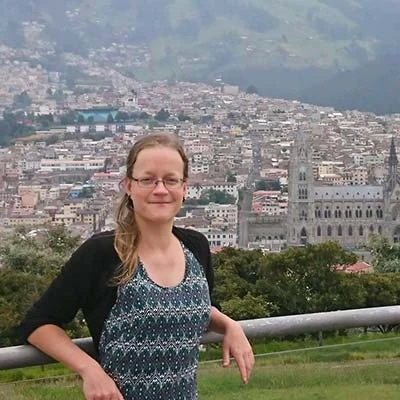
That Ecuador is a country with diverse landscapes and that there are various colorful indigenous markets is probably common knowledge. But have you ever heard about the desert of Palmira? Or have you ever been to the colorful market of Guamote on Thursdays? It’s just a Day trip from Riobamba.
Both attractions are located near Riobamba and can be easily combined in a day trip. From the city, take a bus or private vehicle south towards Alausi. After about an hour you will reach Guamote and after another 15–20 minutes the entrance to the desert of Palmira. It doesn’t really matter which place you visit first, but you should leave as early as possible to avoid the strong midday sun. When I visited the two places, I went to the desert first.
The desert of Palmira
I was very curious about the place. I had heard about it in a documentary, it can hardly be found in any travel guide and is also little known by the locals.
Furthermore, I took the bus to Palmira very early and asked the co-driver to let me know, so I wouldn’t miss the stop. After about an hour ride I got off at a sign, from there it is about 500 m to the entrance to the desert. In the entrance area you pay $1 entrance fee and there are small booths with snacks, drinks and souvenirs, but they were only sporadically occupied during the pandemic.
Already on the way from the main road, the ground was very sandy. From the entrance area a path leads to a small hill from which you have a wonderful panoramic view of the desert. Whereby desert is actually a bit too much to say, because it is rather an extensive dune landscape, which is interrupted here and there by small pine groves and bunches of grass. Nevertheless, the scenery is very impressive and definitely surprising in such a fertile and vegetated country.
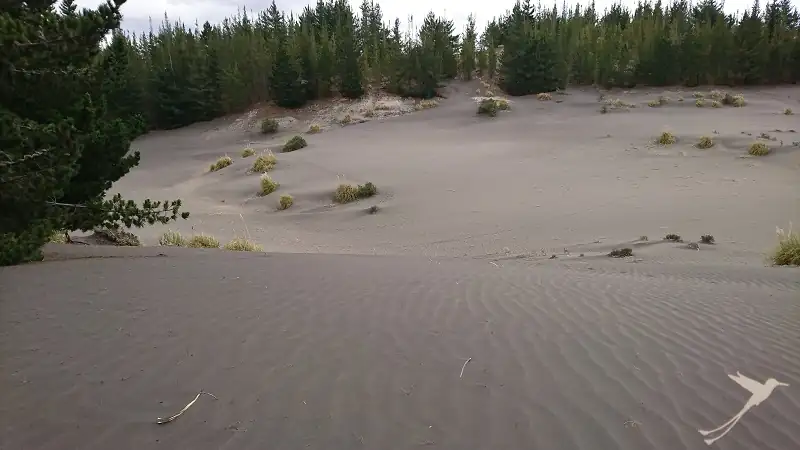
If you ignored the mountains in the background and the cool temperatures, you might think you were somewhere on the coast.
I walked around a little bit and let the landscape impact me from different perspectives. In the meantime I had taken off my shoes, and it was a bit of a strange sensation to feel very soft and fine sand under my feet at an altitude of about 3000 meters. The beige sand is streaked with almost black streaks, indicating volcanic minerals – not so surprising close to the Avenue of Volcanoes.
Since it was cloudy at that time and also still quite early, the sand still felt cool. I think with burning midday sun, barefoot walking is not so recommended.
Origin of the desert of Palmira
How this desert landscape was formed, could not be figured out clearly so far. Originally, paramo vegetation probably grew here, but in the time of settlement, first by various tribes, later by the Spanish colonists and the associated animal farming, the area became more and more overgrazed. It is also possible that the former water sources of this area were overexploited. These factors and the strong winds contributed to the increasing desertification.
To prevent this, pine trees were planted about 30 years ago, thus slowing down the wind and stabilizing the soil. Pine trees are not part of the original vegetation of Ecuador, but their wood is used economically and they attract water. Until today, the desert landscape of about 10 hectares has not spread further.
Recommendations for the desert of Palmira
In addition to walks or short hikes through the dunes, it is also possible to go horseback riding. For this purpose, horses or mules can be rented from the community at the entrance and you will be accompanied by a mule driver.
After consultation with community members, it is also possible to camp in the desert or in the pine groves.
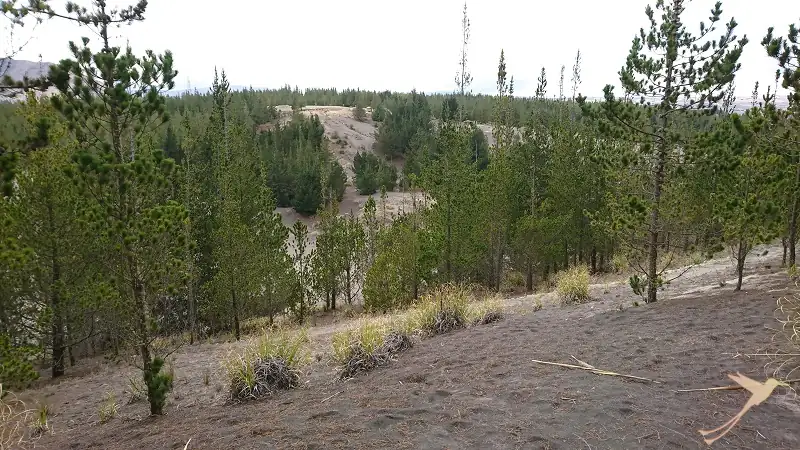
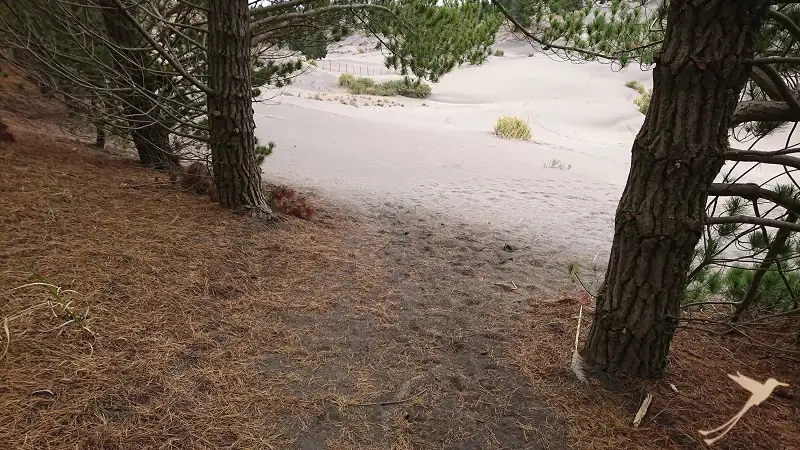
Care should always be taken not to leave garbage behind, as no public garbage transport comes to these areas.
If you like it a bit more active, you can bring your sand board. Certainly, the dunes are not comparable to those of the deserts in Peru or Chile, but nevertheless the small descents are a lot of fun.
Clothing-wise, you should be prepared for anything. Temperatures can vary from 8 ° C to 24 °C. Early in the morning you can often expect fog and drizzle, while around noon and afternoon the Andean sun is burning. There is a constant moderate to strong wind. So it is best to put on several layers of clothing and definitely wear headgear. A windbreaker and sunglasses are certainly helpful as well.
Theoretically, the desert is passable with a 4×4 vehicle, but for the sake of nature you should rather leave the car near the road at the entrance area.
Colorful market of Guamote
Around noon, I headed to Guamote. Like every Thursday, it was market day and already when I got off the bus, the first traders and buyers with various goods could be seen. Guamote, and the surrounding area has been inhabited by indigenous people for many centuries, mainly Kichwa can be heard in the streets and many of the inhabitants are still dressed traditionally – as in many Andean villages in Latin America. Politically, the city was founded in 1613 as a Parroquia (parish). The town is characterized by narrow streets, a colonial church, low houses, some of which were still built with adobe blocks, and the railroad tracks, which are unused these days, however.
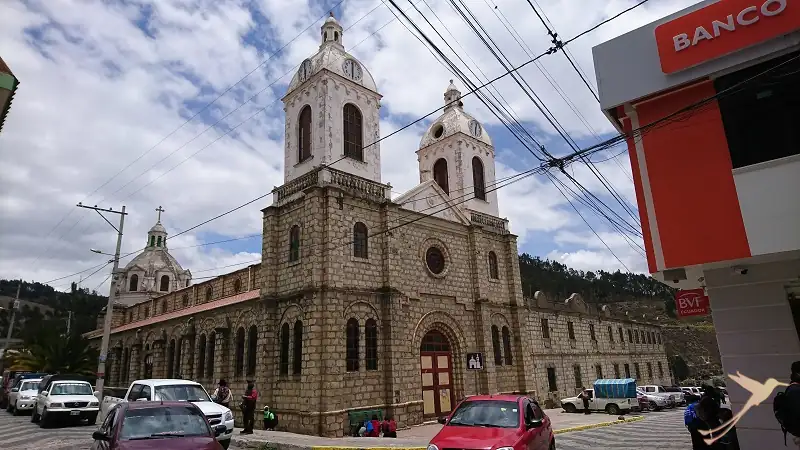
I strolled through the streets and alleys and marveled at the colorful hustle and bustle. Almost everything you can imagine is sold. The products are thematically divided into different areas. Over several streets stretch the textile market with colorful scarves, jackets, ponchos, caps but also sewing accessories and fabrics.
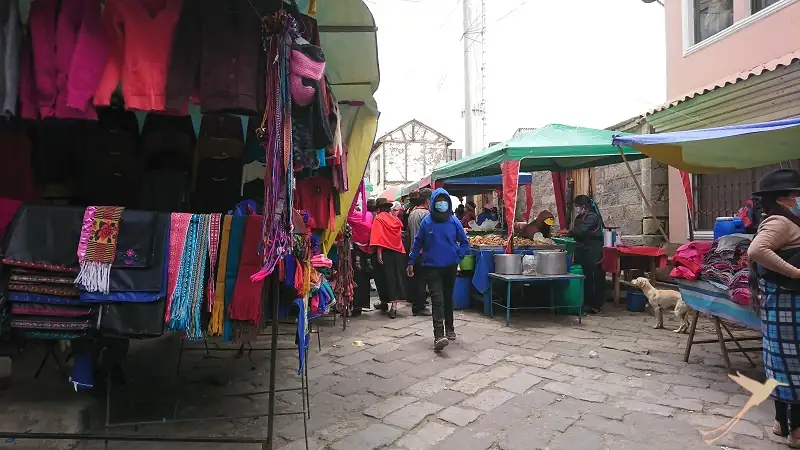
In a different area there is a stand with potatoes on the other. In addition, fruit stands, meat stands, various legumes and cereals in large bags and spices of all kinds. In between there are always small stands with tables and stools where food is sold.
The market stretches across the railroad tracks, which serve as seating for the vendors, whose stand is just a cloth on the ground.
Everywhere something is being pulled or pushed around, flying vendors sell products from their vendor’s stalls, children run around, and sheep or pigs are tied to some poles or posts.
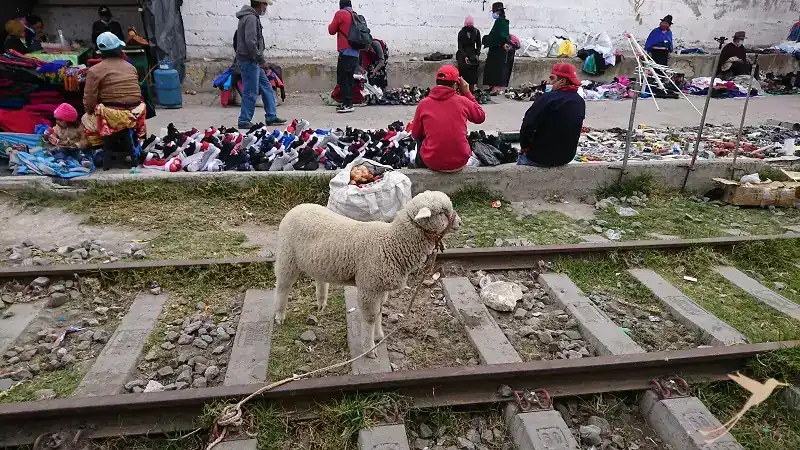
I often stood on the side of the road for a while and observed what was going on.
I also briefly visited the community project Inti Sisa, which is both a guesthouse and supports the population in many ways, offering excursions and tours to the surrounding area for visitors. Another blog article is dedicated to this project in more detail.
Filled with new and exciting impressions, I drove back to Riobamba in the afternoon.
Besides the day trip to the desert of Palmira and the market of Guamote, one can of course make other interesting excursions from Riobamba. One of the highlights is certainly the volcano Chimborazo. Depending on your physical condition, you can walk, hike or even climb to the top. Other destinations for day trips are also the lagoon of Colta, Baños or Ambato. It is also not far to the rainforest and the city itself has many churches, squares, museums and markets worth seeing.







